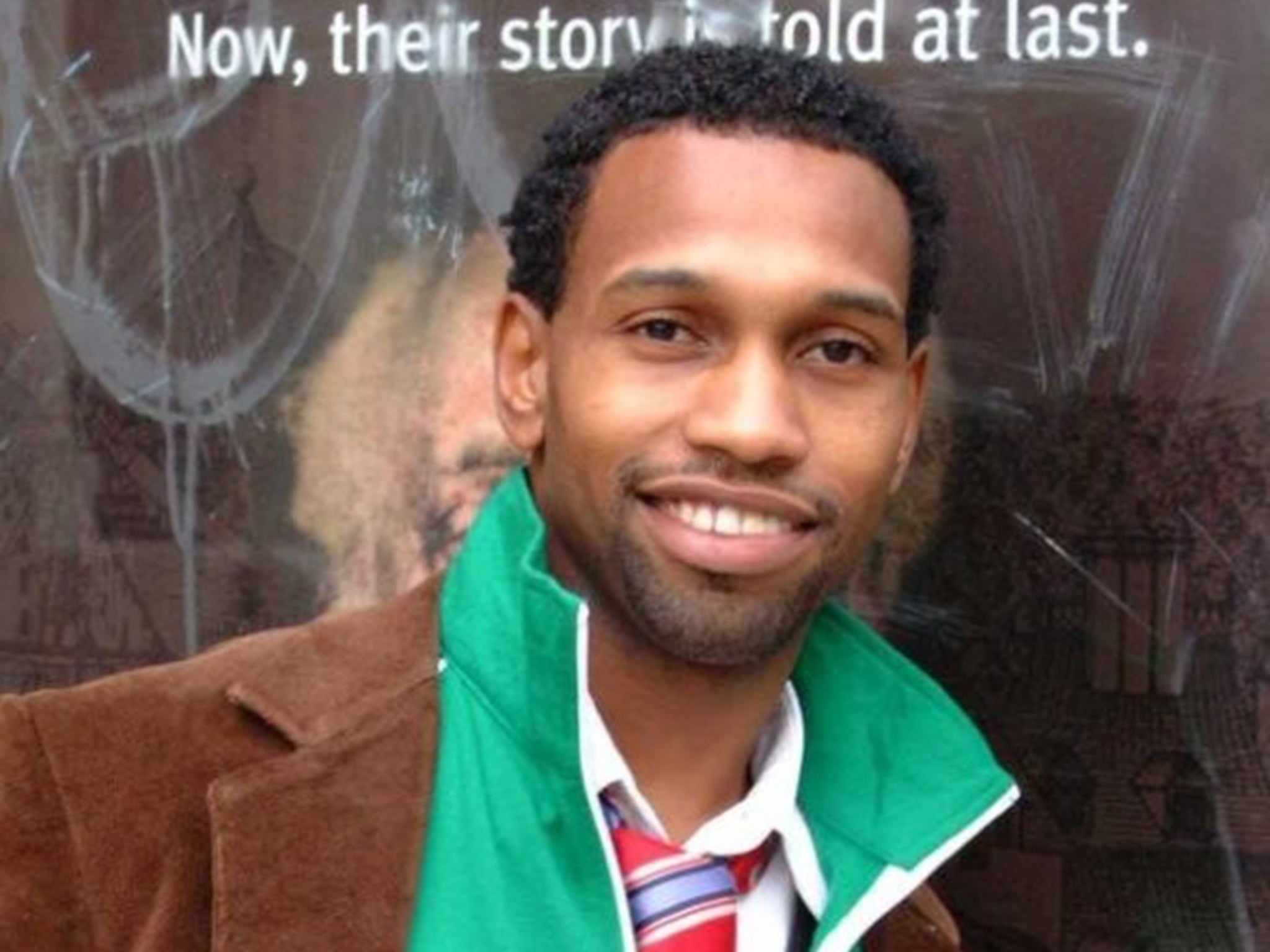Nathaniel Mary Quinn: Artist who grew up in Chicago poverty chooses London for first show
Quinn arrives in London, 20 years after escaping gunfire and gangs

When Nathaniel Mary Quinn was growing up in one of Chicago’s poorest housing projects he would be regularly woken by gunshots fired by warring gangs outside.
Three decades on, he has shaken off a troubled upbringing – abandoned by his family at the age of 15 – to become a “rising star” of the New York art scene. And his gallery has chosen London to make his big debut.
Mr Quinn’s exhibition Past/Present opened in Pace London, the UK arm of one of New York’s most prestigious galleries, on Friday.
“It’s exciting and scary,” he told The Independent. “It’s the American dream, I’m very excited. I wasn’t on the radar for a long time. People seeing my stuff this year was seeing it for the first time. Now they’re raving about it.”
The show runs for a month and includes new work in oil and charcoal from the Brooklyn-based artist which come to terms with his troubled upbringing.
He said: “The gallery was thinking about how to mobilise my career and thought London was the best place to start. The art world here embraces artists in my position more.”
While he is almost completely unknown in London, there is a lot of buzz around Mr Quinn in New York especially after Pace chose to represent him in May.
Dexter Wimberly, who came across the artist’s work in his role as an independent curator in New York, said: “Nathaniel is a rising star; he’s beginning to get the recognition he deserves for his work. As a young artist he has a huge future ahead of him. Coming to the attention to Pace Gallery is an amazing step forward for his career.”
Mr Wimberly, who is now director of strategic planning at Independent Curators International, said buzz had begun a year ago at two shows featuring Mr Quinn’s work, which had key people from the art world attending. These included a trustee of the Whitney Museum of American Art and a powerful gallerist who had collaborated with Jeff Koons.
Yet the New York art scene is a world away from where Mr Quinn, 37, grew up. He was raised in the poverty-stricken projects, the equivalent of UK housing estates, on the south side of Chicago, buildings which have subsequently been torn down.
“Where I lived was populated by gang violence, I grew up seeing shootings and killings. Everyone living there was a witness to poverty and crime. You knew at a young age you could be killed,” he said.
Growing up, conditions were hard, with the lights constantly being disconnected, and his family turning on the oven to heat the apartment.
He managed to avoid joining a gang, although most of his friends did. He was known instead for his art, something he had done since a small child.
“I’ve been making art my entire life,” Mr Quinn said. He learnt to draw by copying comic books and he became known as an artist in the neighbourhood.
“I’ve always wanted to be an artist; there was never any question about that in my life. All my friends knew me as an artist. I was challenged to art duels by other kids.”
He secured a scholarship to a prestigious private college Culver Military Academy in Indiana at the age of 15, which would prove his way out of the projects. “I woke up there and heard birds singing, and I knew I was in a different land altogether; I was accustomed to waking up to gunshots.”
Yet his mother died a month after he joined Culver, and then weeks after that he returned home to find his father and four brothers had left. He has not seen them in the 22 years since. “My life since that was not good. I was drinking a lot and in constant distress and pain,” he said.
After high school, college and then graduate school he worked as a substitute teacher and then taught at-risk youth in the criminal justice system.
Less than a year ago his art career took an “upward swing,” when he started painting about issues from his upbringing and his family history and he could give up his day job. “I find making art now thrilling. It used to feel like a job, but now it feels fun and challenging.”
He added: “The whole thing about the buzz is surreal. It feels like I’m getting a gain in my life that is equivalent to all I have lost in my life. I’ve lost my entire family, my sense of belonging. Now I feel God is giving it to me back tenfold.”
Past/Present opened in Pace London, the UK arm of one of New York’s most prestigious galleries, on Friday.
Subscribe to Independent Premium to bookmark this article
Want to bookmark your favourite articles and stories to read or reference later? Start your Independent Premium subscription today.

Join our commenting forum
Join thought-provoking conversations, follow other Independent readers and see their replies